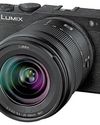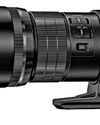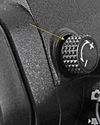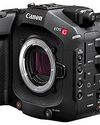
During the film era, it was impossible to take a photograph in low light, without a tripod or a flash. That was because the ISO (or its equivalent predecessor, the ASA) rating of 99% of the films being used was just 100 and sometimes, even lower. Images from faster films were of low quality and in any case, the ISO maxed out at about 3200, unless you did push processing, which made the quality even worse!
Even after digital cameras were introduced, the low light capability was nothing great till larger sensors and CMOS technology brought a sea of changes. Now, it is quite common to see cameras offering ISO values in six digits and some even going over a million.
Whatever may be the case, you will sooner or later encounter a situation where you feel that the light is not enough to take a picture with your camera handheld, and you do not have a tripod or a flash (or even if you have the latter, it is of no use – for example, if you are photographing a monument or a landscape). Under such circumstances, you would do the following. Crank up the ISO to the maximum level, switch on image stabilisation and set the lens at the widest aperture (smallest f/ number). If possible, you will try and use a shorter focal length to get a slower handholdable shutter speed to satisfy the standard thumb rule. That’s about it. Let us say you have done all that and you look at the shutter speed on your camera only to find that it is ½ second or slower. Not enough to handhold!
So, what next? Pack your bag and leave? No, not necessarily. Here is a technique that the author has been using with good results and this article describes just that.
This technique relies on a few important underlying facts.
This story is from the {{IssueName}} edition of {{MagazineName}}.
Start your 7-day Magzter GOLD free trial to access thousands of curated premium stories, and 9,000+ magazines and newspapers.
Already a subscriber ? Sign In
This story is from the {{IssueName}} edition of {{MagazineName}}.
Start your 7-day Magzter GOLD free trial to access thousands of curated premium stories, and 9,000+ magazines and newspapers.
Already a subscriber? Sign In

SELECTING THE RIGHT SYSTEM
Buying a new mirrorless camera can be a daunting decision. Not only are cameras very expensive, but also choosing a brand with an exclusive mount can mean locking yourself into a system.

Capturing Momenta Folding Boundaries
With the Pixel 9 Pro Fold, Google takes cues from its impressive line-up of Pixel smartphones and resolves some of the design oddities we’ve seen on foldable smartphones from more seasoned competitors in the category.

Super Sharp
Smart Photography reviewed the OM System OM 1 Mark II camera last month. If you haven’t read the review, please do so.

HIDDEN FEATURES OF YOUR CAMERA
Ashok Kandimalla has been in the photographic field for over three decades and has extensive experience in both film and digital photography.

Hahnemühle Hemp Paper at Olympics & Paralympics 2024
As the 2024 Paris Olympics and Paralympics embraced sustainability, Hahnemühle’s Digital FineArt Hemp paper played a central role as the exclusive medium for the official Premium Posters. This eco-friendly, plant-based paper aligned with the Games’ commitment to sustainability and delivered exceptional print quality. From limited-edition posters to the Artistic Posters Programme, Hahnemühle’s innovative use of hemp fibres showcased how high-value print products continue to thrive in a rapidly digitizing world.

The Lasting Power of Print: Preserving Memories Through Photobooks
I am a software engineer turned photographer, and my journey in photography has been a constant companion throughout my life.

The Wildlife of Eastern Mongolian Steppe
Mohit Ghatak is an engineer and a management postgraduate and works as a regional business leader in Singapore.

Abhishek Dey's Photo World
I identify myself more as a travel photographer than a purely landscape photographer.

Manfrotto lithium ion batteries for cameras
Manfrotto has introduced its new MKII lithium-ion batteries, featuring a higher capacity of 2400mAh for Nikon, Sony, Canon, Fuji, and OM System cameras.

Canon to have EOS C80 with enhanced features
Canon announced the launch of its latest Cinema EOS camera, the EOS C80, just ahead of the International Broadcasting Convention (IBC) 2024.